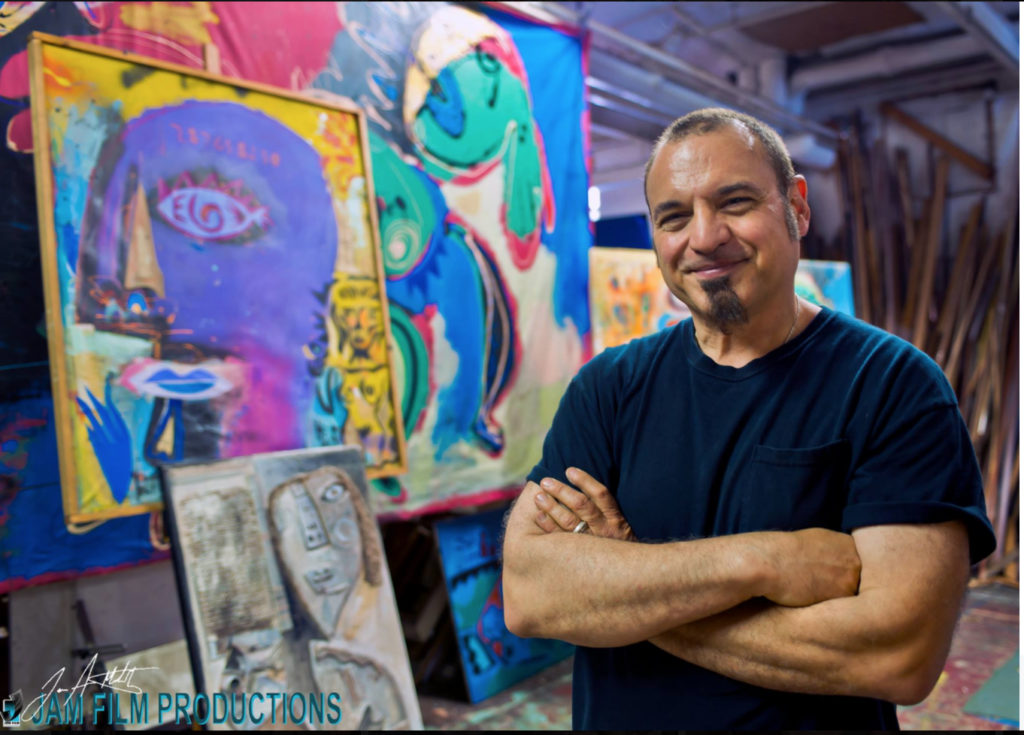Art World
A White Artist’s Painting of Tamir Rice’s Shooting Sparks Heated Debate in Pittsburgh
The artist withdrew the work, and a public forum is planned.

The artist withdrew the work, and a public forum is planned.

Cleveland artist Tom Megalis meant to spark discussion with his painting of the shooting of 12-year-old Tamir Rice, a black boy gunned down by a Cleveland police officer in 2014. The painting was bound for Pittsburgh’s Dollar Bank Three Rivers Arts Festival, where it was one of 54 works accepted into a juried exhibition.
But when Megalis posted a video of himself talking about the painting, titled Within 2 Seconds, the Shooting of Tamir Rice, on Facebook, he says, he got more of a discussion than he had bargained for. While Megalis meant the painting as an expression of his own outrage and sadness about the incident, many commenters saw it as a white artist exploiting an African-American tragedy. (An image of the painting can be seen here.) As it happens, the painting was chosen by the jury in a blind selection process; they didn’t know the identity or race of the artist when they chose it.
The backlash was swift and intense enough to cause him to think twice about going through with the show. Partly for fear of causing further outrage and partly because he was so dismayed by the personal nature of some of the attacks, Megalis ultimately removed the Facebook posting and opted to withdraw the painting from the Three Rivers exhibition entirely.
“I needed to stop the pain, out of respect,” he said. He said he felt “ambushed” by the online criticism, though he was focused on learning. “I tried to understand and hear.”
The painting hit directly on the news that the police officer who shot Rice, Timothy Loehmann, had been fired. A grand jury failed to indict Loehmann in 2015, saying he had reason to fear for his life because he mistook the toy gun Rice was playing with for an actual firearm. The city of Cleveland paid $6 million to settle a lawsuit brought by Rice’s family.
Speaking to artnet News by phone, Megalis cited as part of his inspiration for the painting a CNN editorial by Isaac Bailey, who asked, “Why aren’t more white people standing up and demanding that this kind of injustice no longer stand? Why aren’t more white people mourning Rice with us?”
Megalis saw his painting as his way of doing so.
“I never thought that I couldn’t do this painting because I’m white,” said Megalis. “I’m just human. It’s something for Tamir. I read that he liked to play basketball, and that he loved to draw and paint. It’s a tragedy that he’s not going to get a chance to paint pictures.”
There has been a drumbeat, in recent months, of outraged responses to white artists’ depictions of African-American victims of police brutality and racist violence. When Kelley Walker’s depictions of repression of Civil Rights-era protests went on view at the Contemporary Art Museum St. Louis, black staffers and community members took umbrage, leading the museum to modify the exhibition’s layout. The show’s curator ultimately resigned.
More recently, Dana Schutz’s depiction of the open casket of Emmett Till, the young black boy lynched for supposedly whistling at a white woman (who later admitted her accusations were false), inspired protests when it went on view in the Whitney Biennial. That controversy, like the one around Megalis’s work, started on social media, where highly acrimonious debate raged for weeks.
Megalis hasn’t gone without some vocal support.
An editorial in the Pittsburgh Post-Gazette argued that it would been better for him to stick to his guns and show the painting.
“If the rule now is that only black artists can express black pain,” reads the editorial, “then there are whole swaths of human experience that artists from different racial backgrounds would be unable to express… Asking an artist to show his or her ‘racial papers’ before allowing them to express themselves is little more than aesthetic apartheid.”
The Three Rivers Arts Festival has organized a forum for discussion of the events surrounding Megalis’s work, set to take place June 7.
“It’s not the way we’d planned for,” festival director Sarah Aziz told the Post-Gazette, “but I’m hoping this forum will attract people who wouldn’t usually be in a room together to talk about art and the importance of it and the importance of respect and culture.”